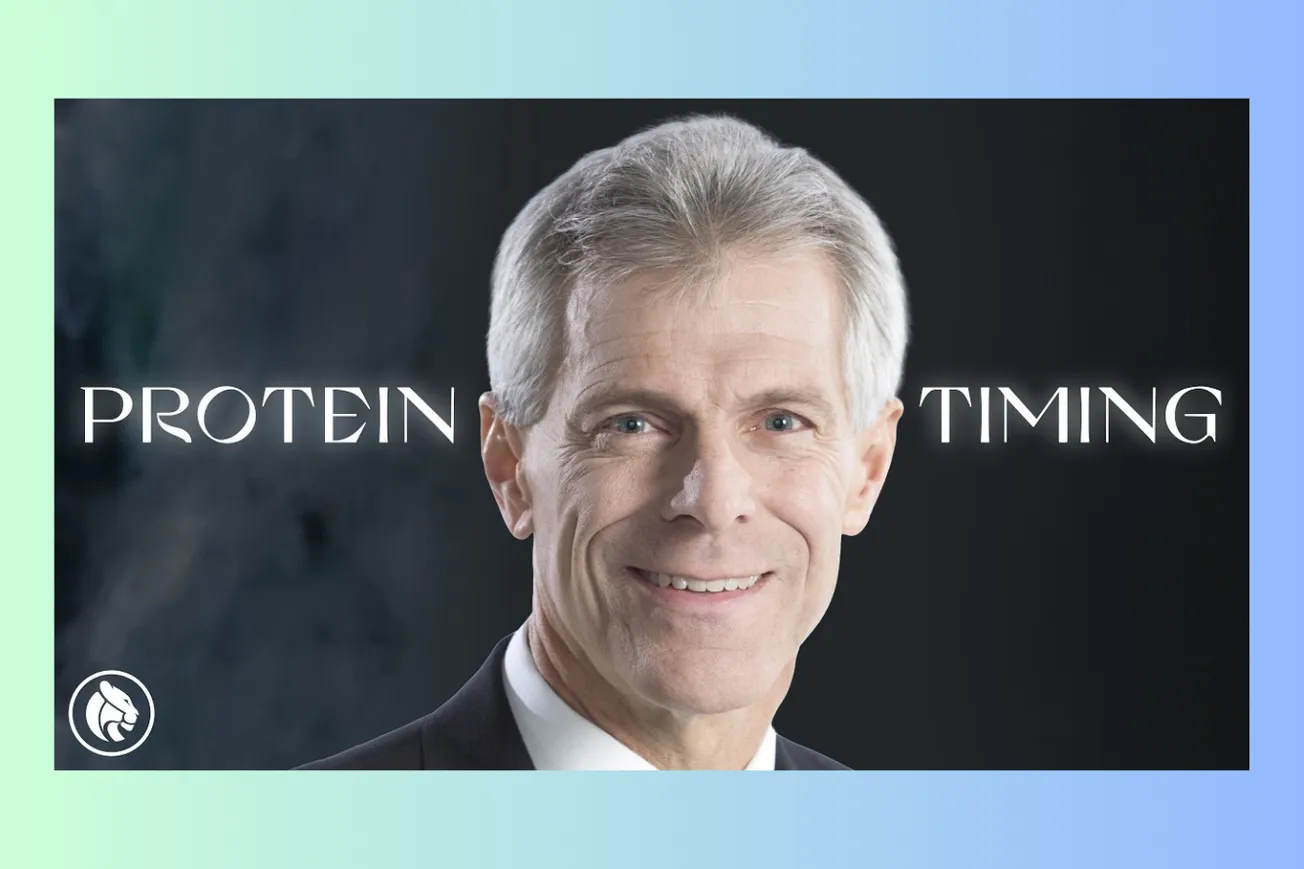Table of Contents
Unlock the science of peak endurance, exploring how physical stamina is deeply intertwined with brain function. This comprehensive guide covers the four types of endurance training, the underlying physiological mechanisms, and actionable protocols for optimising your breathing, hydration, and mental fortitude based on the Huberman Lab podcast.
Key Takeaways
- Endurance capacity hinges on the interplay of nerves, muscles, blood, heart, and lungs, fueled by ATP derived from sources like glucose and fat.
- The decision to quit during exertion is primarily neural, driven by brain signals like epinephrine, highlighting the trainability of mental resilience.
- Four distinct endurance types exist: muscular, long-duration, anaerobic HIIT, and aerobic HIIT, each yielding specific physiological adaptations.
- Muscular endurance training uses high reps (12-100) with short rests, focusing on local muscle efficiency without heavy eccentric loading.
- Long-duration workouts (>12 mins continuous) excel at building capillary networks and mitochondrial density, enhancing overall aerobic efficiency.
- Anaerobic HIIT pushes beyond VO2 max briefly, improving high-intensity fuel use, while aerobic HIIT powerfully boosts heart stroke volume and oxygen delivery.
- Proper hydration is crucial; losing 1-4% body weight as water significantly cuts physical and mental performance. Follow the Galpin equation guideline.
- Breathing techniques, including nasal preference and warming up respiratory muscles, directly enhance oxygen uptake and workout capacity.
- Visual focus acts as a mental pacer, boosting short-term effort, while panoramic vision aids efficiency and recovery during sustained activity.
Timeline Overview
- 00:00 - 15:00 — Introduction to the Huberman Lab podcast's goal: zero-cost science communication. Discussion of sponsors (ROKA, InsideTracker, Athletic Greens). Overview of previous episodes on physical performance (skill learning, strength, fat loss) and introduction of today's topic: endurance, its importance beyond traditional athletes, and the four types to be discussed. Defining endurance as continuous effort and its potential link to mental persistence. Introduction to ATP as the core energy currency and the body's ability to convert carbohydrates, fats, and potentially ketones into ATP via mitochondria.
- 15:00 - 30:00 — Explaining the hierarchy of fuel use: phosphocreatine for initial bursts, then glucose, glycogen (from liver/muscle), and finally fats (lipids from adipose tissue). Emphasis on the critical role of oxygen in efficiently burning these fuels (aerobic metabolism). Re-framing endurance by asking "What prevents endurance?" – identifying limiting factors across nerve, muscle, blood, heart, and lungs. Acknowledgment of Dr. Andy Galpin's expertise. Deep dive into the neural basis of quitting: the locus coeruleus releasing epinephrine (alertness/readiness signal) and how glial cells monitor this, triggering a shutdown ("quit" signal) when a threshold is reached, often influenced by perceived futility of effort. Quote: "...our desire to continue or put differently, our willingness to continue and our desire to quit is mediated by events between our two ears." Highlighting the need for electrolytes (sodium, potassium, magnesium) and glucose for nerve function (action potentials).
- 30:00 - 45:00 — Muscle fuel systems: phosphocreatine and stored glycogen for initial/intense work. Role of temperature and pH in muscle energy production (linking back to cooling techniques from previous episodes). Blood as a fuel transport system: carrying glucose, fatty acids (mobilized from fat stores), and oxygen. The heart's role in circulating fuel and oxygen, and the lungs' role in oxygen intake. Introduction to the four types of endurance training. Focus on Muscular Endurance: defined as local muscle fatigue being the limiting factor, not cardiovascular. Examples: high-rep push-ups, planks, wall sits. Protocol: 3-5 sets, 12-100 reps (12-25 typical), 30-180 sec rest. Crucially, no major eccentric loading (slow/heavy lowering phase) to avoid excessive soreness/damage. Isometric holds (planks, wall sits) are excellent for building postural endurance.
- 45:00 - 1:00:00 — Adaptations from Muscular Endurance training: primarily improved local mitochondrial respiration (oxygen use within the muscle) and better neural control, not significant strength/hypertrophy gains. Importance of postural endurance (e.g., spinal erectors via planks) and addressing asymmetries. Discussion shifts to Long Duration Endurance: continuous effort >12 minutes (runs, swims, bikes). Protocol: One continuous set, lasting 12 mins to hours, performed below 100% VO2 max. This builds efficiency – performing the same work with less fuel. Key adaptations: increased capillary density (more blood vessels in muscle) and mitochondrial density (more energy factories in muscle cells), improving oxygen/fuel delivery and utilisation. Quote: "You're becoming more efficient... burning less fuel overall doing the same thing."
- 1:00:00 - 1:15:00 — Introduction to the two distinct types of High-Intensity Interval Training (HIIT), often conflated: Anaerobic and Aerobic. Anaerobic Endurance (HIIT): Pushes above 100% VO2 max. Protocol: 3-12 sets, work/rest ratios from 3:1 (e.g., 30s on/10s off – quality degrades faster) to 1:5 (e.g., 20s on/100s off – better for maintaining form in technical movements). Builds mitochondrial respiration under stress and neural drive. Example progression: start with 3 sets, add 1-2 sets per week. Good for developing capacity for repeated short, intense bursts (e.g., field sports sprints).
- 1:15:00 - 1:30:00 — Aerobic Endurance (HIIT): Also 3-12 sets, similar work/rest ratios (3:1 to 1:5), but a 1:1 ratio (e.g., mile repeats: run 1 mile, rest equal time, repeat) is particularly effective. This protocol broadly trains all energy systems (nerve, muscle, blood, heart, lungs). Key adaptation: significant increase in heart stroke volume (blood pumped per beat) due to the eccentric loading of the heart muscle from high blood return, leading to a stronger, more efficient heart. This improved oxygen delivery benefits both muscles and brain function, enhancing cognitive performance and focus. Discussion of how this training builds capacity for longer continuous efforts (like marathons) even without doing full-distance training runs. Mention of concurrent training (strength + endurance) being possible with adequate rest (ideally 24h) between session types.
- 1:30:00 - 1:45:00 — Practical tools for optimising endurance. Breathing: Nasal breathing preferred for efficiency and filtering; mouth breathing needed for maximal efforts/exhales. Warm-up respiratory muscles (diaphragm, intercostals) for ~3 mins pre-workout with deliberate deep breaths to improve capacity. Addressing side stitches: often phrenic nerve irritation, relieved by double inhales/full exhales. Hydration: Crucial, as 1-4% body weight loss in water impairs physical/mental performance by 20-30%. "Galpin Equation": Body weight (lbs) / 30 = ounces of fluid per 15 min of exercise (adjust for sweat rate/conditions). Importance of electrolytes (Na, K, Mg). Difficulty drinking during high intensity (>70% VO2 max) due to reduced gastric emptying, but this can be trained.
- 1:45:00 - 2:00:00 — Recovery strategies: Parasympathetic down-regulation post-workout (5-20 mins of calm, slow nasal breathing or rest) accelerates recovery. Discussing cold exposure (ice baths): potentially beneficial for mitochondrial aspects post-endurance work, but still debated; avoid immediately after strength/hypertrophy work. Using the CO2 tolerance test to gauge recovery state. Mental Aspects & Pacing: The power of visual focus. Narrow focus (vergence) on a target increases alertness and effort (via epinephrine) but is costly; panoramic vision is relaxing and efficient. Good athletes likely alternate focus strategically or use mental pacers. Why pacers are disallowed in record attempts – they provide a significant (visual/neural and aerodynamic) advantage. Tapping into an "extra gear" when fatigued, sometimes triggered by accelerating or seeing a competitor pass, likely involves switching fuel utilization strategies (e.g., accessing phosphocreatine or different mixes).
- 2:00:00 - End — Brief mention of supplements relevant to endurance/recovery: caffeine (stimulant), magnesium malate (reduces muscle soreness), potentially beet juice/nitric oxide boosters (vasodilation - effects vary). Emphasis on behavioral tools and accessible protocols. Podcast wrap-up: encouraging subscriptions (YouTube, Apple, Spotify), checking out the Patreon, sponsors, Thorne partnership, and the new Huberman Lab website with its searchable archive and Neural Network newsletter sign-up.
Understanding Endurance: Foundational Science
- Endurance, the capacity for sustained physical or mental effort, is fundamentally limited by the coordinated function of your nervous system, muscles, blood circulation, heart, and lungs. These systems rely on a constant supply of energy, primarily ATP, derived from breaking down fuels like carbohydrates (glucose, glycogen) and fats (lipids).
- Oxygen plays a vital role in efficiently converting these fuels into ATP through aerobic metabolism. While short, intense bursts can utilize anaerobic pathways (like the phosphocreatine system), sustained endurance heavily depends on oxygen availability.
- The sensation of "hitting the wall" or wanting to quit is largely governed by neural signals. Brain areas like the locus coeruleus release epinephrine (adrenaline) to promote readiness and effort. However, other brain cells monitor this output and accumulating fatigue signals, eventually triggering a 'stop' command, often influenced by perceived lack of progress or resource depletion.
- Therefore, enhancing endurance involves improving not just muscle capability but also optimizing fuel delivery (via blood and heart), oxygen uptake (lungs), and the neural signaling that dictates effort and persistence. Quote: "It's not 90% mental, 10% physical... It's 100% nervous system."
- Electrolytes like sodium, potassium, and magnesium are essential for nerve function, enabling the electrical signals (action potentials) that command muscles to contract and support brain activity. Deficiencies directly impair performance.
- Your body is adept at using multiple fuel sources simultaneously. Training different endurance types can improve your flexibility in switching between carbohydrate-dominant and fat-dominant metabolism, delaying fatigue.
Muscular Endurance Protocols & Adaptations
- This type of endurance targets the ability of specific muscles or muscle groups to resist fatigue during repeated contractions or sustained isometric holds, where the limiting factor is local muscle failure, not overall cardiovascular strain.
- Effective training involves performing exercises for a high number of repetitions, typically in the 12-25 range, but potentially up to 100, for 3-5 sets, with relatively short rest periods of 30-180 seconds.
- Examples include high-rep push-ups (chest touching the floor), bodyweight squats, kettlebell swings, or static holds like planks and wall sits, aiming for failure or near-failure within the target rep/time range.
- A key principle is to avoid significant eccentric loading—the slow, controlled lowering phase of a lift. This phase causes the most muscle damage and soreness, which hinders the specific goal of building fatigue resistance for repeated efforts. Focus on the concentric (lifting/pushing) phase and allow a quicker, less-controlled (but safe) return.
- The primary physiological benefits are improvements in the local muscle's ability to utilize oxygen efficiently via mitochondrial respiration and enhanced communication efficiency between the nerves and the targeted muscle fibers for sustained activation.
- While it supports overall fitness and can contribute to better performance in activities requiring repeated movements (like swimming strokes, cycling pedal strokes over hills, or maintaining posture), it doesn't primarily build maximal strength or significant muscle mass (hypertrophy) like lower-rep, heavier training does.
Long-Duration Training: Building Efficiency
- This represents the classic "cardio" approach: engaging in continuous, rhythmic activities like jogging, swimming, cycling, or hiking for periods exceeding 12 minutes, often lasting 30-60 minutes or even several hours.
- The intensity is typically kept at a steady, conversational pace, meaning you operate below your maximum oxygen uptake capacity (VO2 max), allowing the activity to be sustained for a prolonged duration within a single, continuous "set".
- The primary goal and resulting adaptation is enhanced metabolic efficiency. Your body learns to perform the same amount of physical work while consuming less fuel and oxygen over time.
- This efficiency gain stems mainly from two structural changes within the trained muscles:
- Capillarisation: The growth of new capillaries, the smallest blood vessels, creating a denser network to deliver more oxygenated blood directly to muscle fibers.
- Mitochondrial Biogenesis: An increase in the number and density of mitochondria, the powerhouses within cells responsible for aerobic ATP production.
- Regular long-duration training builds a robust aerobic base, improving the body's capacity for sustained energy production, fat utilization, and clearing metabolic byproducts, which benefits overall health and supports higher intensity performance.
- While excellent for cardiovascular health and baseline fitness, this type of training alone may not maximally develop top-end speed, power, or the ability to handle very high-intensity bursts compared to HIIT protocols.
Anaerobic HIIT: Pushing Past VO2 Max
- This form of High-Intensity Interval Training involves extremely intense bursts of activity that push your physiological systems beyond your maximum sustainable oxygen consumption rate (VO2 max).
- Work intervals are typically short (e.g., 20-60 seconds) but performed at near-maximal effort, interspersed with recovery periods that are often insufficient for full recovery, forcing reliance on anaerobic energy pathways. Common work-to-rest ratios range from 3:1 (e.g., 30s all-out sprint, 10s rest) to 1:5 (e.g., 20s all-out, 100s rest).
- The number of sets usually ranges from 3 up to 12, with progression typically involving adding more sets over weeks rather than drastically increasing interval duration. Shorter rest periods (like 3:1) rapidly degrade movement quality and increase fatigue, while longer rests (like 1:5) allow for better form maintenance during highly technical or powerful movements but still tax the system maximally during the work interval.
- Key adaptations include improved tolerance to metabolic stress (like lactate accumulation), enhanced efficiency of anaerobic energy pathways (glycolysis), and increased capacity for mitochondrial respiration under extreme demand. It also strongly trains neural drive – the ability to command high levels of muscle activation even when fatigued. Quote: "...you're hitting that threshold of how much oxygen you can use in your system?"
- This training is particularly effective for sports requiring repeated high-power outputs with incomplete recovery, such as sprinting in field sports, interval swimming, or track cycling pursuits.
- Due to its intensity, it requires careful programming, adequate recovery (potentially longer than other forms of endurance work), and is often unsuitable for beginners without a solid aerobic base.
Aerobic HIIT: Building Cardiovascular Power
- This HIIT variation involves intense work intervals, often performed near or at VO2 max, but incorporates longer or more complete recovery periods compared to anaerobic HIIT, allowing the aerobic system to contribute significantly and recover between efforts.
- Protocols often use a 1:1 work-to-rest ratio, famously exemplified by "mile repeats" (run a fast mile, rest for the same duration, repeat several times). Work intervals typically last longer than anaerobic bursts, often in the range of several minutes (e.g., 3-12 minutes of hard effort). Other ratios like 1:5 (20s on/100s off) can also be used, especially if focused on power maintenance.
- Like anaerobic HIIT, workouts usually consist of 3-12 sets (repeats), starting lower and building volume over time. The focus is on sustaining the highest possible intensity aerobically during the work interval.
- A major benefit is the powerful stimulus for increasing the heart's stroke volume. The high volume of blood returning to the heart during intense aerobic work causes an eccentric load on the left ventricle, leading it to adapt by becoming stronger and capable of pumping more blood with each beat.
- This results in enhanced oxygen delivery capacity to the entire body, including muscles and the brain, improving performance across various endurance activities and boosting cognitive function through better brain oxygenation and vascularisation.
- Aerobic HIIT effectively bridges the gap between sustained aerobic work and maximal intensity bursts, building significant cardiovascular power and efficiency, making it a cornerstone for many endurance athletes preparing for races.
Optimising Performance: Breathing & Hydration Science
- Effective breathing is non-negotiable for endurance. While nasal breathing is generally superior for filtering air and efficiency at lower intensities, mouth breathing becomes essential to maximize air intake and carbon dioxide expulsion during high-intensity efforts.
- Actively warming up your respiratory system is beneficial. Spend ~3 minutes before exercise focusing on deep diaphragmatic (belly) breaths and then consciously engaging your intercostal muscles to lift and expand your rib cage fully. This primes the muscles responsible for breathing.
- Side stitches are typically caused by irritation of the phrenic nerve (which controls the diaphragm and runs near the liver), not muscle cramps. Performing a few "physiological sighs" (double inhale through the nose, followed by a long exhale through the mouth) can often alleviate the stitch by resetting the nerve's firing pattern.
- Hydration status dramatically impacts performance. Losing just 1-4% of your body weight through sweat can decrease your physical and mental work capacity by 20-30%. Monitor fluid loss (roughly 1-5 lbs per hour depending on conditions/intensity).
- Use the "Galpin Equation" as a practical hydration guideline during exercise: Consume approximately (Your Body Weight in lbs / 30) ounces of fluid every 15 minutes. Adjust based on individual sweat rate and environmental conditions.
- Crucially, fluid intake should include electrolytes – sodium, potassium, and magnesium. These are lost in sweat and are vital for nerve impulses and muscle contractions. Drinking plain water excessively without replacing electrolytes can be dangerous (hyponatremia).
- Drinking fluids during very high-intensity exercise (>70% VO2 max) can be challenging due to slowed gastric emptying, but the ability to hydrate during intense work can be trained gradually by starting with small sips and increasing volume over time.
Mental Game: Pacing, Focus, and Recovery Strategies
- The way you use your vision significantly impacts effort and endurance. Focusing intently on a specific point or target engages 'vergence' vision, which triggers alertness pathways (releasing more epinephrine) and allows for greater immediate effort output, but this comes at a higher neural energy cost.
- Conversely, adopting a wide, panoramic visual field promotes relaxation and reduces the mental energy drain, enhancing efficiency during sustained, lower-intensity periods. Skilled endurance athletes likely learn to strategically shift between focused and panoramic vision to manage effort and conserve mental resources. Quote on visual focus: "...having a target a milestone is a powerful way that we can generate more force and energy in anything."
- The presence of external pacers (visual targets like lasers, other runners, pace cars) demonstrably improves performance, which is why they are often regulated or banned in record-setting attempts. This highlights the powerful link between visual input, neural activation, and physical output.
- Experiencing a sudden "kick" or finding an "extra gear" when fatigued, often spurred by competition or nearing a goal, isn't purely psychological magic. It likely involves the nervous system accessing different fuel utilization strategies or tapping into reserved neural drive in response to the heightened stimulus (like seeing a competitor pass).
- Systemic recovery is as important as muscular recovery. After intense training, deliberately engaging in parasympathetic activity—calm, slow nasal breathing; resting quietly; light stretching—for 5-20 minutes helps shift the nervous system out of a "fight or flight" state, accelerating recovery processes and readiness for subsequent training or cognitive tasks.
- Regularly assessing your recovery state using tools like the CO2 tolerance test (measuring maximal controlled exhale time) can provide objective feedback on whether your nervous system is ready for more stress or needs additional rest.
Bottom Line
True endurance encompasses both robust physiological systems and resilient neural control, trainable through specific protocols targeting muscular fatigue, aerobic efficiency, or high-intensity capacity. Optimising breathing, hydration, and mental strategies alongside structured training is key to unlocking your full endurance potential for both body and brain.









